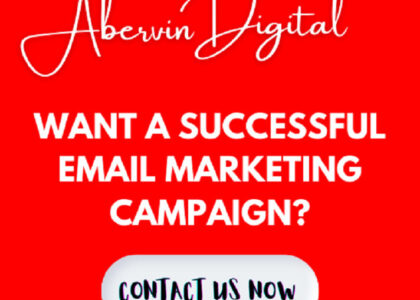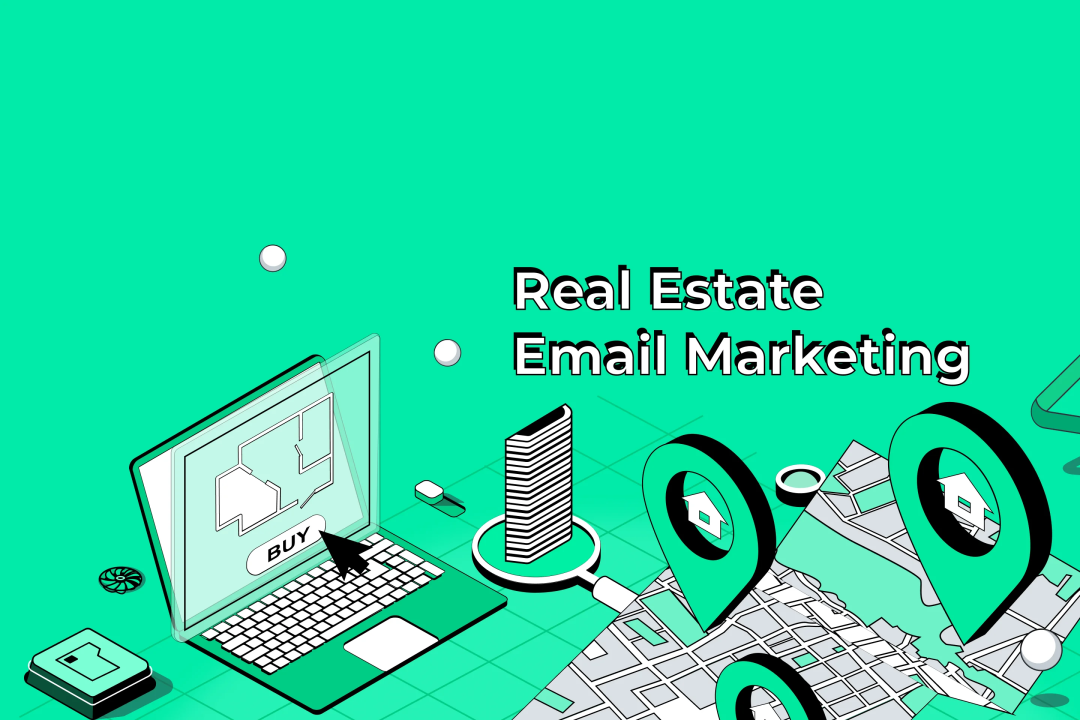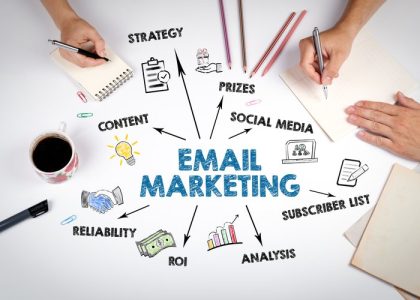“Just Run Ads” Isn’t a Strategy Anymore!
It’s 2025 and scaling an ecommerce brand isn’t just about throwing money at Facebook ads and praying that Mark Zuckerberg smiles at you. Today, customers are smarter, competition’s tougher and the platforms are changing their rules just about every other day now.
Oh.. what’s that? A violation you didn’t know existed? Welp! Account banned.
Anyway, if you’re tired of feeling like your Ecommerce business has hit a growth block, or you are stressed about abandoned carts, or wondering why your emails keep getting ghosted – this post is for you.
These 15 Expert Secrets are the unfiltered playbook that is helping brands scale past six and seven figures right now. Not surface-level fluff like “optimize your store” or “be active on social.” We’re talking real strategies that make you go, “Wait, why am I not already doing that?”
Here’s what we’ll discuss in this blog:
- 5 Foundation Secrets (1 – 5), we’ll break down how to build a brand that people don’t just buy from once but tell their friends and family about. We’re talking positioning, products that actually scale, and turning one-time buyers into ambassadors.
- 5 Traffic Secrets (6 – 10), it’s all about bringing in the right kind of eyeballs – without wasting cash. So we’ll be going over smarter ads, scroll-stopping organic content, and funnels that just keep customers.
- 5 Retention Secrets (11 – 15) will help you finally crack the code on making customers come back without begging. Automation, behavioral personalization (not just “Hey [First Name]”), and email flows that actually work.
This isn’t a “one day you’ll use this” kind of guide. These secrets are the kind you can plug in today, test this week, and see real movement by next month. So whether you’re running a one-product Shopify store or juggling multiple SKUs on WooCommerce, bookmark this post – because the real fun starts now.
5 ECOMMERCE FOUNDATION SECRETS
Before you run ads, tweak headlines, or chase whatever shiny new marketing hack the “gurus” are pushing these days, you need one thing: foundation. These five secrets we will be going over has helped brands start and grow intentionally, not just spraying and praying. Growing your eCommerce business is not about doing more; it’s about doing what matters.
Let’s get into it.
Secret #1: Build a Brand, Not Just a Store
Anybody can launch a store these days – it’s easier than ever. A few clicks on Shopify, a logo you bought off Fiverr, a couple of AliExpress products, and boom, you’ve technically got a business.
But there is one small problem – the internet is overflowing with “stores.”
And most of them are forgettable. But some businesses have customers that care – customers that stick around, buy again, and tell their friends about the brand. The difference between the former and the latter is the brand. The feeling they get when they land on your page or open your email.
Take brands like Apple or Nike for example. You’ll notice they don’t lead their marketing with all the cool tech specs or product features they have. If they did that, they’ll be in an endless race against trends. They instead lead with an emotion their audience can connect to. So while Apple sells creativity, Nike sells grit. And if look around you, you’ll find Nike fans or Apple fans, people who vibe with these emotions and you’ll notice these aren’t just products, they’ve become movements. So instead of focusing on building your first Shopify store…
Ask yourself:
- What do we believe that others don’t?
- What emotional shift do we want our customers to feel after buying from us?
- If our brand were a person, what would they be like at a dinner party?
When you know who you are and what you stand for, everything, from your ads to your about page falls into place. And in a sea of online stores, communicating with clarity what your brand stands for is what makes people say, “This is for me.”
Because people don’t fall in love with stores. They fall in love with stories.
Secret #2: Choose Products That Scale, Not Just Sell
Look, getting your first few sales is exciting. That cha-ching sound you hear when someone buys your product! Proof of concept, right?
There’s an undeniable thrill in those first few sales. But real businesses don’t just chase what’s trending because they know it’s easy to sell stuff. It’s hard to sell stuff again and again without drowning in ad costs.
Some products are great for a few quick wins – and terrible for long-term growth. If you’re spending $20 to make a $5 profit, or burning cash on ads every time you need a sale, that’s not a business. That’s a bonfire.
Here’s what winning products usually have in common:
- Clear demand (people are already looking for it or experiencing the problem it solves)
- Healthy margins (you’re not in a pricing war)
- Long-term relevance (it’s not here today… gone tomorrow)
So if you’re building a catalog, ask yourself, would someone come back for this in 6 months? Would they tell a friend? Does it solve something real?
Products that solve real problems tend to scale better than products that just looks good for clicks. That’s because people come back – they don’t just buy once.
Secret #3: Focus on Customer Lifetime Value (LTV)
One thing we’ve noticed with every successful founder we’ve worked with here at Abervin Digital is they all learn early the importance of the second sale.
Getting a customer in the door is hard and expensive. Which is why customer retention and LTV should be your focus because that’s where you get the most margins, grow quicker and your business scales. So instead of just chasing the next sale, start thinking how much someone is likely to spend with you over their entire journey.
Let’s say you spend $50 to acquire a customer who buys once. That might barely break even. But if they come back three more times? That changes everything.
So how do you raise LTV without feeling pushy or salesy? For starters, the mindset to have when looking to raise LTV is not to squeeze more money from people – it’s about serving them so well, they’d rather not go anywhere else. You can do this with;
- Smart upsells: One obvious example of this is Spotify offering “ad-free” or Glossier suggesting a moisturizer with your cleanser. It’s not just more stuff, but useful stuff.
- Subscriptions: Predictable revenue is pure gold. Being able to charge a recurring fee on your supplements, skincare, or coffee, or even your services is not just a win for you as a business owner but your audience who find your products valuable would appreciate the convenience of not having to go through the ordering process all over again but still getting their product delivered on time – every time.
- Loyalty programs: Loyalty programs are relationship builders. When you do it right, it does two powerful things at once: make customers feel appreciated and give them a reason to come back again (and again). And we’re not talking about generic discounts here. Give customers rewards they actually want like when someone hits a milestone with your brand, maybe three orders in a row, you celebrate them. Let them know they matter. When your brand makes them feel good, they become superfans and talk about you, post your packages on Instagram, text their friends your link, and defend you in the comments section when someone throws shade. So yes, reward people for sticking around.
Secret #4: What is Your Unique Value Proposition (UVP)?
When someone is looking for a product you sell, you’re very likely not the only one they’re looking at. Whatever you’re selling – there are a hundred other brands selling it too. Your UVP is the reason someone chooses you and not the 10 other tabs they opened.
The cool (kinda sad) thing is most businesses and business owners don’t even know why they’re different.
Your UVP tells people – What they can expect when they choose you, Why you exist, What you stand for. A great UVP does three things call out a specific audience, highlight a meaningful difference, tap into emotion or identity. Let’s make that make sense with these examples
- “Made without microplastics – for oceans and your skin.” (Eco-conscious, ethical, and practical.)
- “Refills that fit through your letterbox. Subscriptions that don’t suck.” (Convenience meets honesty.)
- “We’re for women who lift more than dumbbells.” (Empowering, cheeky, crystal-clear.)
See how those feel personal? Clear? Punchy? Replicate this for your business so you do not come off like every other brand out there.
Your UVP should be obvious on your homepage, your product pages, your TikToks, and your packaging. If someone lands on your site and doesn’t instantly understand what makes you different… you’re losing them. So make your difference (UVP) unmistakable and unmissable.
Secret #5: Build an Omnichannel Marketing Engine
Most businesses aren’t failing because they don’t post enough. They’re failing because their marketing is a disconnected mess. One day it’s an email blast, the next it’s a random reel, and maybe a paid ad that feels like it was written by someone who’s never seen your brand before..
The brands that scale – without burning out or burning budget – aren’t just winging it. They’re building systems. Systems where their content, ads, emails, and SMS all work together like gears in a machine.
Here’s how high-performing brands do it:
- Email Flows : Forget the blast-and-hope emails. Real flows welcome new subscribers, tell your story, spotlight your values, and guide buyers post-purchase.
- Value-packed SMS : You’re not trying to be the clingy brand that texts every time someone breathes. SMS works best when it’s used like a VIP alert system.
- Retargeting Ads: Most retargeting ads scream “Buy now!” when what your audience really needs is “Here’s why this is worth it.” The smartest brands create dynamic ads that mirror the stage a user is in. If they saw your homepage, show them a testimonial carousel.
- Organic Social: This is where your brand shows personality and shares values. The goal here isn’t to “go viral”… it’s to make your audience nod and say, “They get me.”. Create behind-the-scenes content and educational reels that solve real pain points.
When your marketing across channels speaks the same language, your brand doesn’t just look bigger, it feels more stable and trustworthy.
5 TRAFFIC SECRETS: ATTRACTING THE RIGHT CUSTOMERS
We get it. “More traffic” sounds good on paper. More clicks, more views, more stuff happening. But the truth is not all traffic is good traffic. You don’t just want more eyeballs or just numbers on a dashboard – you want the right people landing on your site. The ones who say, “Finally, this is what I’ve been looking for.” The ones who don’t just click, they convert, come back, and tell their friends.
Let’s dive into how to not just get attention, but turn it into loyal customers, real conversions, and actual momentum.
Secret #6 – Scale Paid Ads the Smart Way
Running Facebook or TikTok ads without a strategy is one of the quickest ways to burn your money without results. If you want to scale your business the smart way, it starts with knowing your numbers. Before you touch that ad budget, you need to know what these three numbers are for you:
- CAC (Customer Acquisition Cost) – what you’re paying to win a new customer
- AOV (Average Order Value) – what they’re spending when they land
- LTV (Customer Lifetime Value) – what they’re really worth over time
If you’re scaling without knowing those three, you’re not scaling…you’re gambling. If you don’t know what you’re paying to acquire a customer, how can you scale profitably?
Once that’s locked in, it’s time to diversify:
- Facebook is still undefeated for precise interest-based targeting. But think of it like modern dating – you’ve got seconds to impress, so your first ad should stop the scroll, peak their curiosity – and whisper “this is for you.” or it’s swipe left.
- Google Ads captures buyers with intent. This is where warm leads live. They’re already raising their hand and typing in “best X for Y.”
This is your moment – so don’t waste it on generic ads like “Affordable services available now.” Create hyper-specific headlines tied to the user’s intent. Something like “Struggling to Convert Email Opens into Sales? Get Proven Klaviyo Flows.” Match the ad copy, landing page, and intent like a surgical strike. - TikTok Ads: Tiktok is the ADHD Olympics. You’re either entertaining, educating, or emotionally triggering – or you’re ignored. Treat the ad like content. First 2 seconds = hook. Next 5 = payoff or pattern interrupt. Then hit them with the CTA. Don’t sell – tell a story.
- Retargeting: 95% of people won’t buy on the first visit. That’s not a rejection – it’s a delay and this is where retargeting comes in to turn those browsers into buyers. Retargeting is where the money is for a lot of businesses. With retargeting you follow them around (politely), and remind them why they clicked in the first place.
Now the smart play when it comes to scaling ads is to not just scale budgets – but scale creatives as well. Raising your daily spend without refreshing your ads will lead to ad fatigue which means wasted ad spend.
Secret #7 – Turn Organic Traffic into Revenue
There’s no denying the power of paid traffic. It’s immediate. You flip a switch, you get clicks. But the real long-term value is hidden in organic traffic. It’s the stuff that doesn’t just show up, but sticks around. It compounds and builds trust while you sleep. And when you do it right, it turns browsers into buyers without needing to outbid your competition every time.
So, how do you make your organic channels work as hard (and as profitably) as your paid ads? Let’s start with SEO
- SEO is a growing digital asset. When you write a blog post that ranks, that page doesn’t just exist, it brings in new prospects every day, week, and month. Not by chance, but by matching what people are actively searching for. If someone types in “best “your niche” in “your location,” and an authority blog you wrote pops up, that’s not just traffic – that’s a sales conversation you didn’t have to pay for. The idea is to build trust with new audiences by becoming the go-to answer in your niche.
- UGC (User-Generated Content) : Now that they’ve found you, what convinces them to believe you? It’s not your fancy logo or the 12th version of your brand font. It’s other people. User-Generated Content is organic social proof in its rawest, most relatable form. We’re talking about reviews, testimonials, unboxings, casual walkthroughs – this is content that feels real because it is real. And whether it shows up on TikTok, Instagram, or even embedded into your blog, UGC builds bridges that you as a brand cannot. One good UGC reel can outperform a month’s worth of polished creative. No budget can buy that level of authenticity.
- Blogging: If you still think blogs are dead, then you’re doing blogging all wrong. The difference between a blog that sells and a blog that just exists lies in structure and strategy. If you create blogs that answers a specific question, shows real examples, links to a freebie, product, or audit naturally…then you will have turned a basic blog into a mini sales funnel, hiding in plain sight. You don’t need to be the best writer in New York to make this happen. You just need to create relevant content, and include subtle CTAs.
- Influencer outreach: What happens when your blog and content get picked up or shared by someone with an audience? When an influencer naturally includes your blog in a roundup, or references your free resource in a video, that action is an organic multiplier because these micro-influencers are people whose audiences trust them because they don’t shill every product that comes their way. So when you get mentioned by influencers like that in your niche, that traffic doesn’t bounce – it just converts.
Everything we’ve talked about – SEO, UGC, blogging, outreach, all comes down to Your organic content should always lead somewhere. Each post, video, or blog should lead someone closer to the sale without being pushy. Serve first, sell later.
Secret #8 – Build a Customer Acquisition Funnel, Not Just Ads
If your entire strategy is “run an ad, sell a thing,” you’re not building a business… you’re setting yourself up for disappointment. Paid traffic is often misunderstood so you have a lot of business owners who think of it like a vending machine: put in money, get a sale. But real customer acquisition doesn’t work like that anymore. Not with all the competition out there.
People don’t know you yet. They don’t trust you or care about your product – yet. And without warming them up, your ad dollars go straight down the drain. Which brings us to…how customer acquisition should actually flow in 2025:
Cold traffic → Lead magnet → Warm retargeting → Conversion
- Stage 1: Cold Traffic → Lead Magnet: People seeing your ad for the first time are just scrolling. They’re not ready to buy – they’re curious at best. So don’t sell.. That’s where lead magnets come in – free guides, quizzes, checklists, or mini trainings. Something useful, fast, and aligned with the problem your actual offer solves.
- Stage 2: Warm Retargeting → Trust-Building Content: Now that they’ve raised their hand and opted in, it’s time to show up again. But not with more “BUY NOW” energy. With trust-building content. This for your business could be something like – customer stories or testimonials, a behind-the-scenes video of how your product works. Retargeting with warm ads here works way better and cheaper than cold pitching.
- Stage 3: Conversion Offer: Once you’ve earned some credibility and attention, now you can confidently pitch your product or service. But as you can see this is the third step, not the first. When your funnel is doing its job: You’ve already educated them on the problem, you’ve proven your value through helpful content and they’ve seen others using it and winning. So when you present your real offer, whether it’s a product, service, or consultation – it doesn’t feel like a hard sell. It feels like a solution they’ve been warming up to this whole time.
You wouldn’t invest in something you’ve never seen in action. So why run your ads like that?
If you want better ROI from your paid traffic, stop chasing one-click wins and instead build a funnel that gives cold leads room to warm up.
Secret #9 – How to Actually Profit from Influencer Marketing
Not all paid traffic comes from Meta Ads or Google Search. Some of the most persuasive traffic comes from people, not platforms.. Influencer marketing is a form of paid traffic that can feel like organic love. The endorsement, the social proof, the ability to show your product in a lifestyle context is a money maker when done right. But it can also be a total budget drain when done wrong.
So here’s how to use influencers effectively without flushing your marketing budget down the drain.
- Start with Micro-influencers (5k–50k followers) often have higher engagement and feel more relatable.
- Macro-influencers (100k+) give you reach, but beware of inflated vanity metrics.
- Ask for screenshots of previous click-through rates and story views. Not just follower counts.
- Get clear contracts. Spell out deliverables, deadlines, usage rights, and payment terms.
Oh—and track ROI like a hawk. UTM codes, custom discount codes, affiliate tracking. No guessing games.
If you can’t measure it, don’t scale it.
Secret #10 – Convert Traffic Like a Pro
You spent all this time and money to get traffic. Now what? If your site isn’t converting, you’re basically pouring water into a leaky bucket.
- Use CRO tools (Conversion Rate Optimization) like Hotjar or Crazy Egg to spot where people drop off.
- A/B test everything—headlines, buttons, page layouts. What you think works might not be what actually works.
- Simplify your checkout flow. Remove friction, reduce form fields, add trust signals (reviews, guarantees).
- Show shipping costs early. Nobody likes surprise fees at the last second.
Pro move? Add urgency (without faking it). Limited-time bonuses, real deadlines, low stock indicators—all these convert browsers into buyers without feeling scammy.






